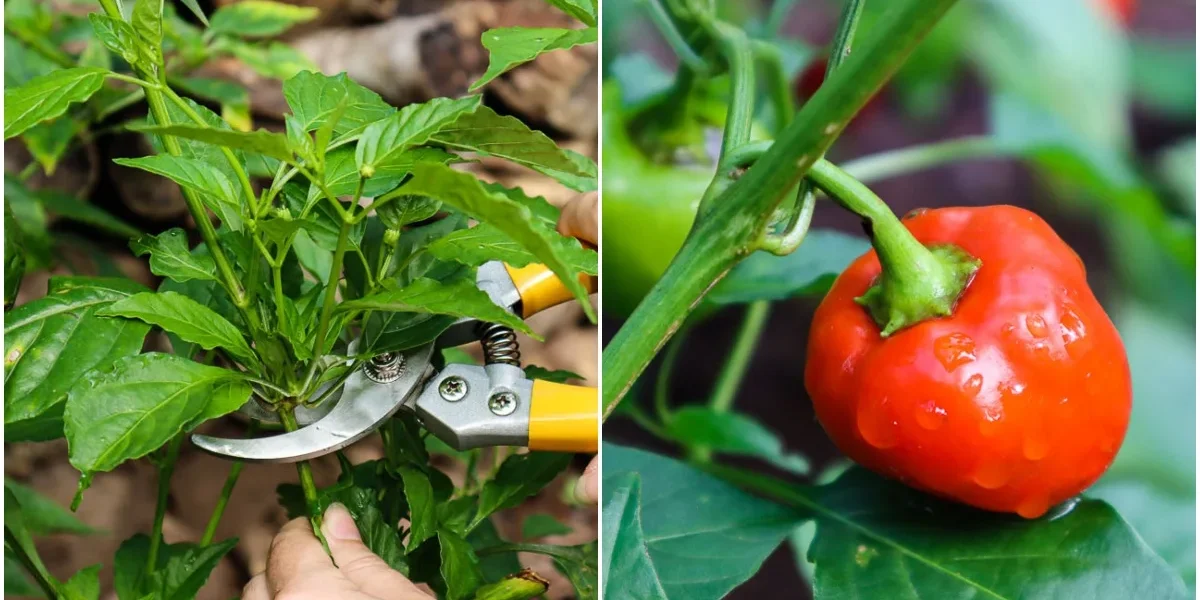Pruning is a key practice in cultivating healthy and productive pepper plants. Properly pruning your pepper plants not only encourages robust growth but also leads to larger yields of flavorful peppers. In this guide, we will walk you through the essential steps on how to prune pepper plants to ensure bountiful harvests and thriving plants.
- Timing Matters: Begin pruning when your pepper plants are well-established and have a few sets of true leaves. Typically, this is about 4-6 weeks after transplanting. Pruning too early can stunt growth, so it’s crucial to let the plants establish themselves first.
- Identify the Main Stem: Locate the main stem of each pepper plant. This is the central, thicker stem that emerges from the soil. The goal of pruning is to encourage the plant to put more energy into fruit production by removing unnecessary growth.
- Pinch Off Early Growth: Gently pinch off the first set of flowers that appear on each branch. While it may seem counterintuitive, removing these early blossoms redirects the plant’s energy towards establishing a stronger root system and more substantial growth.
- Focus on Suckers: Suckers are the small shoots that emerge between the main stem and branches. Pinching off these suckers helps maintain a single-stemmed plant, channeling energy towards fruit production rather than excessive foliage. This is especially important for determinate pepper varieties.
- Remove Diseased or Yellowing Leaves: Regularly inspect your pepper plants for any signs of disease or yellowing leaves. Prune away affected areas promptly to prevent the spread of disease and ensure the plant directs nutrients to healthy parts.
- Encourage Airflow: Prune selectively to improve airflow within the plant canopy. Good airflow reduces the risk of diseases like powdery mildew and allows for better pollination. Aim to create an open and well-ventilated structure.
- **Support Heavy Fruit: As your pepper plants mature and start producing fruit, additional pruning may be necessary to support the weight of the peppers. Use stakes or cages to prevent branches from breaking under the load.
- Regular Maintenance: Pepper plants benefit from ongoing maintenance. Periodically check for new suckers, diseased leaves, or overcrowded branches. Prune as needed to maintain a healthy and productive plant structure.
- Experiment with Varieties: Different pepper varieties may respond differently to pruning. Consider experimenting with the pruning techniques that work best for your specific pepper types. Some may benefit from a more aggressive approach, while others may prefer a lighter touch.
- Fertilize and Water Adequately: To complement pruning efforts, ensure your pepper plants receive sufficient nutrients and water. A well-balanced fertilizer and consistent watering schedule contribute to overall plant health and robust fruit development.
Conclusion: Pruning pepper plants is a skill that, when mastered, can significantly enhance your harvest. By strategically removing unwanted growth, redirecting energy, and maintaining a healthy plant structure, you set the stage for a season of abundant and flavorful peppers. Experiment with these pruning techniques, tailor them to your specific pepper varieties, and watch your pepper plants flourish with impressive yields.
